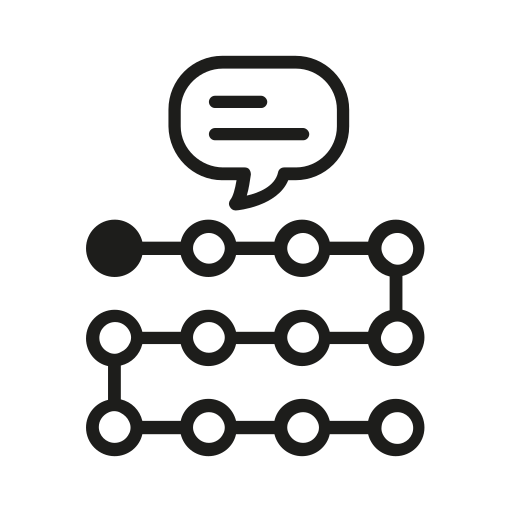Correlation vs Causation
The Basic Idea
If you’ve ever argued with someone who has taken statistics 101, you might have heard them say with pride, “correlation does not imply causation.” This mantra is repeatedly applied when people erroneously assume that two variables bear a cause-and-effect relationship rather than merely displaying a similar pattern of occurrences. Although the rooster’s crow happens every morning as the sun rises, it does not cause the sun to rise.
Classic examples that illustrate this concept often involve odd correlations with ice cream sales, such as forest fires, drownings, sunburns, and even shark attacks. Consider the correlation with forest fires, where the amount of forest fires increases alongside an increase in people buying ice cream. Does this mean that people buying ice cream are causing the fires? Certainly not. They merely display similar statistical patterns as they both occur when it’s hot in the summer. Although this example is an intuitive case where neither of the variables causes the other, many correlations can be more difficult to decipher.
You don't light a patch of the Montana brush on fire when you buy a pint of Haagen-Dazs
- Nate Silver, author of The Signal and the Noise
Theory, meet practice
TDL is an applied research consultancy. In our work, we leverage the insights of diverse fields—from psychology and economics to machine learning and behavioral data science—to sculpt targeted solutions to nuanced problems.
Key Terms
Correlation: An association between two pieces of data.
Causation: The act of causing something; one event directly contributes to the existence of another.
Randomized Control Trial (RCT): an experimental method used to determine cause-and-effect relationships, where results from a control condition are compared to an experimental condition.
Confounding variable: Sometimes known as the “third variable,” a confounding variable influences both the independent and dependent variables, which can lead to a spurious correlation.
History
Around 1889, the English polymath Sir Francis Galton began to suspect a divergence from statistics and causation. Looking at hereditary data sets, Galton began to notice that tall men had longer-than-average forearms, though not as far above average as their height. It was clear to Galton that height was not a cause of forearm length, nor was forearm length the cause of height, but rather both were likely caused by genetic inheritance. He began to use a new term for these relationships such as height and forearm length: they were “co-related.”1
In 1892, another English statistician, Karl Pearson, referenced Galton’s work when he claimed that causation can never be proven–that mere data is all there is to science. In the early 20th century, Pearson and his assistant would provide examples of “spurious correlations” such as the correlation between a country’s per capita chocolate consumption and its number of Nobel Prize winners. However, as Judea Pearl points out in The Book of Why, despite Pearson’s hostility towards causation, by suggesting a correlation was spurious, he was also making a logical reference to causation. In other words, by saying that chocolate consumption does not cause Nobel Prize winners, one is presuming that causation does in fact exist somewhere. So while the statistics community by this time had agreed that correlation does not imply causation, there was little agreement as to how to actually determine causation.
Around 1918, a guinea pig caretaker with the US Department of Agriculture named Sewall Wright began exceeding his job duties by using mathematical models to evaluate direct dependencies in the guinea pig’s genetic data through a causal model. His ingenious work using “path diagrams” would later become the foundation of causal inference. As Pearl writes, “This idea must have seemed simple to Wright but turned out to be revolutionary because it was the first proof that the mantra ‘correlation does not imply causation’ should give way to ‘some correlations do imply causation.’”1
Outside of predetermined data sets, randomized control trials (RCTs) eventually gained popularity within science and statistics as a way to determine causality experimentally rather than relying solely on mathematics. Now often referred to as the “gold standard” in clinical trials, RCTs are essential to sound medical research as distinguishing between correlation and causation is paramount to understanding the efficacy of a new treatment or medical procedure.
People
Sir Francis Galton
The English polymath was also considered a sociologist, psychologist, anthropologist, and meteorologist, among many other “ists.” His statistical work on genetic inheritance led to the concept of correlation. He was also the first to introduce the concept of regression to the mean, the idea that more typical data often follow outliers.
Karl Pearson
An English mathematician and statistician, Pearson founded the world’s first statistics department at University College London in 1911, where his Biometrics Lab became the global center of statistics for at least two decades.1 He was an early proponent in suggesting that correlation does not imply causation. Today, the common statistical method used to calculate a correlation between two variables is known as the correlation coefficient or Pearson’s r. Though Pearson did develop the formula, the idea derived from the work of both Francis Galton and Auguste Bravais.
Ronald Fisher
Also an English statistician, Fisher is often credited with popularizing the RCT within research. In the early 1920s, Fisher was attempting to separate the effects of fertilizers on crops from other variables, when he suggested that randomization was the only infallible tool in statistics.1
Consequences
The consequences of mistaking causation for correlation are vast. Many key decisions made in government and business are often based on statistical analysis, but even when one is looking at objective statistics, the interpretation can still be subjective. For example, a management team might look at marketing data and see that a certain regional ad campaign correlated with an increase in sales, so they decide to pour millions into a nationwide campaign of the same nature. This could prove to be costly, however, as the correlation doesn’t actually mean that the ad campaign caused the increase in sales.
Assuming causation from correlational data can also have considerable ramifications in public opinion. We’ve all seen or heard attention-grabbing headlines that suggest that coffee causes cancer and that eggs make you live longer, then, a week later, hearing that coffee prevents cancer and eating eggs can kill you. What gives? The fact is that many health and nutrition studies are only correlational, which means, in a given data set, researchers might have found that coffee drinkers have higher rates of cancer compared to non-coffee drinkers. This conclusion does not actually tell us if coffee causes cancer. Some people have even gone as far as saying much of nutrition science is actually pseudoscience, as it often fails to adequately meet the criteria for causation.2
The public can also be prone to misperceiving causation from their own observations in addition to observations from researchers. From a social perspective, this can lead to a number of troubling and erroneous assumptions regarding race, class, or gender. These errors can affect how people treat others as well as the beliefs they hold. Much of the anti-vaccine movement, for example, rests on pseudoscientific evidence that mistakes correlation for causation.3
Controversies
As one can imagine, the correlation versus causation space can be a tinderbox for igniting controversies. Many arguments that rely on a given statistic are challenged by a lack of rock-solid causal inference. The tobacco industry famously relied on this strategy in their attempt to reject the once contentious association between smoking and lung cancer, even gaining support from the distinguished statistician Ronald Fisher. Due to the ethical and practical barriers in conducting a RCT to determine the causal effects of tobacco on lung cancer, it was difficult to convince skeptics such as Fisher, who happened to be a smoker himself, of the consequences of smoking. Some people argued that there could be a smoking gene that caused people to crave cigarettes and also increased their chances of getting lung cancer. Despite many studies over the years indicating a strong association between smoking and cancer that made a compelling case for a causal relationship, the skeptics were always able to stand behind the logic that none of the studies were able to compare smokers to otherwise identical nonsmokers.1
No self-respecting statistician would contest the notion that correlation does not imply causation, so the controversies that surround the concept often involve a claim that two correlated variables also exhibit a causal relationship. Like with the smoking debate, these discords emerge in situations where an RCT cannot settle a dispute, which is often the case in fields such as sociology and economics. The minimum wage, for example, is a hotly debated subject due to the challenge in acquiring data that can express the causal effects of changes in the minimum wage. Economists cannot run an RCT where they tamper with people’s wages, so people on both sides of the argument can point to potential confounding variables as a rebuttal to certain correlations that may be used to support a prior viewpoint.
Case Studies
Facebook and mental health
A study published in the American Journal of Epidemiology in 2017 found an association between Facebook use and reduced well-being.4 The finding was publicized by multiple major media outlets, such as CNBC and the Harvard Business Review, with the former going as far as saying, “Facebook actually makes you feel depressed.” Although the study used longitudinal data and was done with rigor, it still only offers a correlational relationship. The study does not tell us whether Facebook use is indeed causing depression. It is equally as plausible to imagine depression to cause increased Facebook usage. And even though the data shows that as people increase their time on Facebook, their well-being drops, it’s possible that a confounding variable such as loneliness is influencing both time spent on Facebook, as a way to supplement social connection, as well as depression.
Financial market headlines
Morning news headlines often resemble a slogan like “Stocks surge amid progress in China trade deal.” These compelling narratives offer an easy tidbit of information to explain that day’s movement in the market. The problem is, a news event correlating with stock prices does not imply that the event actually caused the changes in the market. As Paul Krugman, a Nobel Prize winner in economics, once said: “I hear something happened in the market today. Anyone who tells you they know why thereby proves that they have no idea what they’re talking about.” There are so many variables in a stock index such as the Dow Jones, that it’s practically impossible to determine causation in a single day’s movement.
Related resources
Does Anchoring Work in the Courtroom?
If you’re interested in reading more about human biases in one’s beliefs over cause-and-effect relationships, this article looks at whether the anchoring effect can impact a juror’s perception of causation.
The Game of Life: Discussing Determinism in Behavioral Science
This article touches on many of the quandaries and challenges in behavioral science research in meeting the demands of proving causality.
Sources
- Pearl, J., & Mackenzie, D. (2018). The book of why: the new science of cause and effect. Basic Books.
- Archer, E., Lavie, C. J., & Hill, J. O. (2018). The failure to measure dietary intake engendered a fictional discourse on diet-disease relations. Frontiers in nutrition, 5, 105.
- McArdle, M. (2008). Correlation, causation, vaccination. The Atlantic. Retrieved from https://www.theatlantic.com/business/archive/2008/03/correlation-causation-vaccination/3087/
- Shakya, H. B., & Christakis, N. A. (2017). Association of Facebook use with compromised well-being: A longitudinal study. American journal of epidemiology, 185(3), 203-211.


